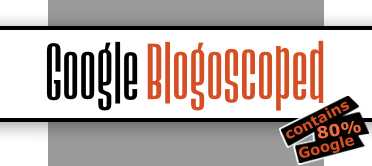That's something I have been missing a lot in Gmail. I just became even more perfect now. Now I'm just waiting for the calender! |
This updated feature is great (its been out for a bit while) but it still does not solve a serious problem that when you send outgoing email via another account in Gmail – on the email headers of Sender/Return-Path, it contains your real gmail address and therefore can be revealed with the email client.
My problem is that the majority of the people I email see my incoming messages with "<another![[put at-character here]](image/at.gif) domain.com> on behalf of <email domain.com> on behalf of <email![[put at-character here]](image/at.gif) gmail.com>" and thus reveals my secret identity! They ask me which either is the real one. gmail.com>" and thus reveals my secret identity! They ask me which either is the real one.
I have emailed Gmail Team about this countless times. Hope to get a human answer this time around.
This has been talked about before:
http://blogoscoped.com/forum/13069.html |
Josue, I know the basic feature has been out for a while but from what I understand, what's new is the auto-selection of the reply email, based upon the email someone was reached at... |
Great feature! This will certainly be useful to me, as I foward about 10 addresses to my gmail account. |
Josue R., enabling you to truly send e-mail with an arbitrary account name would be an invitation for spoofers to abuse Gmail. |
Gmail puts your through a confirmation process that will frustrate the spoofing abuse.
It's just bloody silly to give the option to use multiple From addresses if the underlying Gmail account is shown. Not to mention how silly it looks when you are sending a supposed-to-be-professional repsonse to someone.
I pass nearly all my email for a few different business, plus personal stuff, through the GMail account for the online access it provides. I also manage various Yahoo & Google group email in the same account. And for privacy reasons, I do not want the master Gmal account revealed.
Their vetting process keeps things secure, and the fact that the mail would route through their servers allows for them to track the ultimate sender if someone does attempt nefarious activities. Google really should address this issue. |
You should be able to enter your smtp/pop/hotmail/yahoo settings into gmail, now that would be a great service! And then they could also add a jabber-transport for those account automatically so you can chat with your yahoo/msn friends :D
Wishful thinking... |
The setting to change is found in GMail Settings:
Settings--Accounts--When I receive a message sent to one of my addresses:
(*) Reply from the same address the message was sent to.
Nevertheless, the standard seems to be to send from the GMail adress.
best Greetings, Thomas |
It doesn't actually work as well as you'd think. Often emails are not sent directly to you but are sent to a mailing list which contains your email address. In those cases Gmail does not recognise that the message is actually one that has not come to your Gmail Account directly but has been forwarded from another account and so it does not send back from that address but it sends from your gmail one.
Concrete example... I forward all my uni mail to Gmail and often messages are sent to mailing lists such as taught-students or whatever. In those cases if i reply to sender it does not recognise that the email was sent to my uni account and assumes i want to reply from my gmail address.
I think it would be far better if Gmail would link this feature up with their filter system, so people can decide for themselves how to utilise this "reply from" feature. |
I have written a small tutorial for any Plesk/Sw-Soft user for setting up their account in GMail.
http://cocaman.ch/wp/2006/02/google-mail-aka-gmail-with-plesk
Any comments are welcome |
About the lacks of this feature, I started a petition here:
http://petitionspot.com/petitions/gmailfrom
Please come to sign :-). |
Is there a way not to sign?
Seriously, this "send on behalf of" is a standart (searching the RFC right now, 822 I think).
I do not think Google will drop this feature/behaviour.
For really sending your email as your true email, there is "Gmail for your Domain". |
I think if they did take off the "on behalf of" then phishing and spam detectors would cry foul on the message because it's *not* from who it says it is. |
